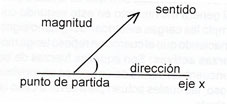Blood Type Definition
Pet Scan Speciation Blood Type / / July 28, 2023

Degree in physics
Blood types are a system of classifying blood according to the presence or absence of certain antigens on the membrane of erythrocytes or red blood cells.
When the first blood transfusions were made from one person to another, doctors realized that while in some Sometimes the transfusion was successful and the patient improved, on others the transfusion created complications that led to the death of the patient. patient. Later it was discovered that not all blood is actually the same and the differences between it determined the success or failure of a blood transfusion.
Antigens and antibodies
In general terms we can say that antigens are molecules that can be recognized by the cells of our immune system. In this way the immune system can distinguish between cells or substances of our own body and external agents that can harm us. Antigens that are part of our body are called “Autoantigens”.
The response of our immune system to external threats can be classified into two types: innate immunity and acquired or adaptive immunity. The innate immune response is mainly made up of non-specific general processes that our body has to protect us. On the other hand, the acquired immune response consists of specific processes against certain microorganisms or toxins to which our body has been exposed.
The specificity of the acquired immune response lies in the ability of some cells to our immune system to recognize antigens and make antibodies against those antigens. Antibodies are proteins generated by our body that, among other things, facilitate and accelerate the immune response against a specific antigen.
ABO system
The most widely used blood group classification system is the ABO System. This system is responsible for classifying the blood type of people taking into account the presence or absence of certain antigens in the membrane of red blood cells.
Two antigens called simply A and B appear on the surfaces of red blood cells in most humans. The A and B antigens are also called "agglutinogens" because they often agglutinate red blood cells.
Thus, a blood type A indicates that the A antigen is present on the red blood cell membrane, a type B represents the existence of the B antigen, an AB blood type indicates the presence of both antigens and the O blood type represents the absence of both antigens.
The ABO system not only provides information about the antigens found on the membrane of the red blood cells, but also indicates the antibodies that person has against other types sanguine. This is so because the immune system makes antibodies against blood antigens that are not found in the body.
Thus, a person with blood type A will have anti-B antibodies, a person with type B will have anti-A antibodies, someone with type AB will not have antibodies against agglutinogens and a person with blood type O will have anti-A antibodies and anti-B.
Rh factor
Along with the ABO system to classify blood types, there is another type of classification called “Rh Factor”. This classification system is based on the presence or absence of an antigen called “RhD” on the red blood cell membrane.
When the RhD antigen is present on the erythrocyte membrane, that blood type is said to be Rh + (positive), while the absence of the RhD antigen is represented as Rh – (negative).
Similar to the ABO System, the Rh Factor also determines the antibodies a person will have as a result of the presence or absence of the RhD antigen. Someone with Rh + will not have anti-RhD antibodies, but a person with Rh – will develop anti-RhD antibodies.
The different blood types
Putting together the ABO and Rh Factor classification systems, we obtain the eight blood types that exist. Knowing the blood types is of vital importance to determine what type of blood can receive a person through transfusion and further avoid complications caused by incompatibility. These blood types along with their characteristics are:
• Type A+: Presence of A and RhD antigens. Anti-B antibodies. You can receive type A+, A-, O+ and O- blood.
• Type A -: Presence of A antigens. Anti-B and anti-RhD antibodies. You can receive type A- and O- blood.
• Type B+: Presence of B and RhD antigens. Anti-A antibodies. You can receive type B+, B-, O+ and O- blood.
• Type B-: Presence of B antigens. Anti-A and anti-RhD antibodies. You can receive type B- and O- blood.
• Type AB+: Presence of A, B and RhD antigens. He has no antibodies against blood antigens. You can receive blood of any type. A person with this blood type is considered a universal recipient.
• Type AB-: Presence of A and B antigens. Anti-RhD antibodies. You can receive blood of any type with Rh-, that is, type A-, B-, AB- and O-.
• Type O+: Presence of RhD antigens. Anti-A and anti-B antibodies. You can receive type O+ and O- blood.
• Type O-: Absence of all blood antigens. It has antibodies against all blood antigens. You can only receive type O- blood. People with this blood type are universal donors.
References
Arthur C. Guyton & John E. Hall. (2016). Treatise on Medical Physiology (Thirteenth Edition). Spain: Elsevier.Why do we have blood types?, Hyperactin, Youtube

